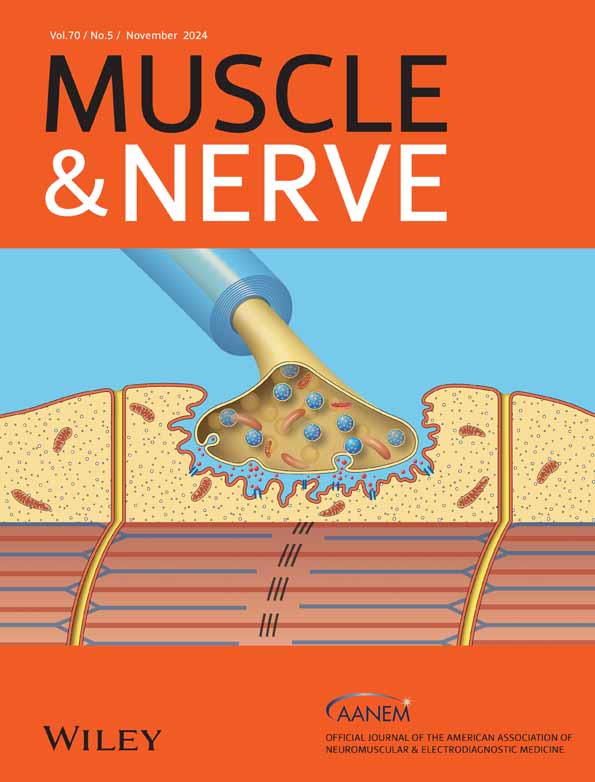The difference in nerve ultrasound and motor nerve conduction studies between autoimmune nodopathy and chronic inflammatory demyelinating polyneuropathy
Abstract
Introduction/Aims
Nerve enlargement has been described in autoimmune nodopathy and chronic inflammatory demyelinating polyneuropathy (CIDP). However, comparisons of the distribution of enlargement between autoimmune nodopathy and CIDP have not been well characterized. To fill this gap, we explored differences in the ultrasonographic and electrophysiological features between autoimmune nodopathy and CIDP.
Methods
Between March 2015 and June 2023, patients fulfilling diagnostic criteria for CIDP were enrolled; among them, those with positive antibodies against nodal–paranodal cell-adhesion molecules were distinguished as autoimmune nodopathy. Nerve ultrasound and nerve conduction studies (NCS) were performed.
Results
Overall, 114 CIDP patients and 13 patients with autoimmune nodopathy were recruited. Cross-sectional areas (CSA) at all sites were larger in patients with CIDP and autoimmune nodopathy than in healthy controls. CSAs at the roots and trunks of the brachial plexus were significantly larger in patients with anti-neurofascin-155 (NF155), anti-contactin-1 (CNTN1), and anti-contactin-associated protein 1 (CASPR1) antibodies than in CIDP patients. The patients with anti-NF186 antibody did not have enlargement in the brachial plexus. NCS showed more frequent probable conduction block at Erb's point in autoimmune nodopathy than in CIDP (61.9% vs. 36.6% for median nerve, 52.4% vs. 39.5% for ulnar nerve). Markedly prolonged distal motor latencies were also present in autoimmune nodopathy.
Discussion
Patients with autoimmune nodopathies had distinct distributions of peripheral nerve enlargement revealed by ultrasound, as well as distinct NCS patterns, which were different from CIDP. This suggests the potential utility of nerve ultrasound and NCS to supplement clinical characteristics for distinguishing nodopathies from CIDP.
CONFLICT OF INTEREST STATEMENT
The authors declare no conflicts of interest.
Open Research
DATA AVAILABILITY STATEMENT
The data that support the findings of this study are available from the corresponding author upon reasonable request.




